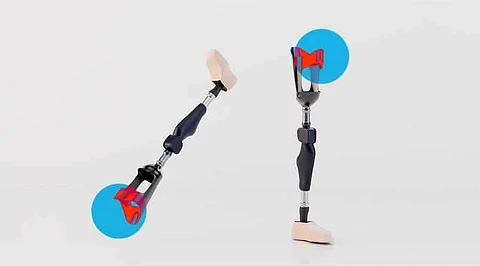

By the way, when we talk about "artificial intelligence," we're not just talking about typical data collection and processing. We are talking about systems that can, in essence, "learn"—that is, systems that can become wiser over time and alter their behavior. When prosthetic devices have this kind of capacity, they might potentially become more natural extensions of our own identities, changing with our bodies and habits.
Some AI functions similarly to a self-driving car: it takes in input from the environment, learns to recognize any threats, and adapts in real time to ensure secure and pleasant encounters. The prosthetic limb being developed at North Carolina State University might be Exhibit A in this class. This experimental gadget interprets the surface being walked on using computer vision and other sensors. Artificial intelligence then assesses this information and applies it to maintain a more natural stride. Tile, brick, concrete, grass, upstairs, and downstairs were the six surface settings that an early prototype could differentiate between.
This differs from the kind of AI found in a microprocessor knee in that an MPK works on the prosthesis's spatial coordinates, whereas the NC State leg reacts to fixed, external inputs. While both prosthetics are using distinct data sets to make their conclusions, their decisions are identical.
AI that Aids in Perceiving and Responding to the Wearer's Physical Condition. Smart sockets are the most relevant example in this AI category. These devices use sensors that track changes in residual limb volume over time and automatically modify the socket to keep the fit snug and pleasant. All of them employ artificial intelligence (AI) to respond to the user's inclinations. This allows the socket to "learn" whether you prefer a tighter or looser fit or to recognize certain patterns associated with your activities. A more sedentary individual who just takes two or three thousand steps a day will receive a different response from these devices than an active person who walks four or five miles a day.
AI Useful for Prosthetics Evaluate and Respond to the Wearer's Intentions. This appears to be the most promising area for prostheses with AI enhancements. A prominent instance is the Esper Hand, seen on the cover of Time Magazine many months back. It makes use of conventional electromyographic sensors, which track muscle impulses and convert them into grips, gestures, and other actions. But the AI modules in the Esper "learn" to interpret such signals with ever-increasing accuracy over time. The hand gets simpler to use as its predictions get faster and more precise. The similar methodology is used in research at the University of Newfoundland, University of Erlangen-Nuremberg, and other institutions, integrating conventional electromyographic interfaces with AI improvements.
An alternative approach connects directly to the peripheral nerves, avoiding the muscles entirely. A prototype limb developed by researchers at the University of Minnesota that reads and interprets information straight from the brain thanks to a nerve implant has shown promising results. Users will be able to manipulate individual fingers with fine motor skills when the inbuilt artificial intelligence (AI) gradually learns to associate certain nerve impulses with certain motions. Additionally, recent studies involving patients who utilize osseointegrated prosthetic limbs are centered around the nerve-interface technique.
Join our WhatsApp Channel to get the latest news, exclusives and videos on WhatsApp
_____________
Disclaimer: Analytics Insight does not provide financial advice or guidance on cryptocurrencies and stocks. Also note that the cryptocurrencies mentioned/listed on the website could potentially be scams, i.e. designed to induce you to invest financial resources that may be lost forever and not be recoverable once investments are made. This article is provided for informational purposes and does not constitute investment advice. You are responsible for conducting your own research (DYOR) before making any investments. Read more about the financial risks involved here.
